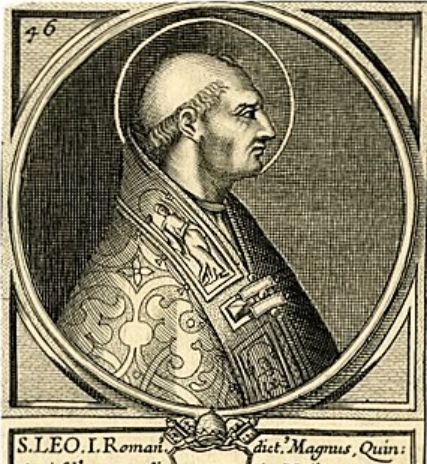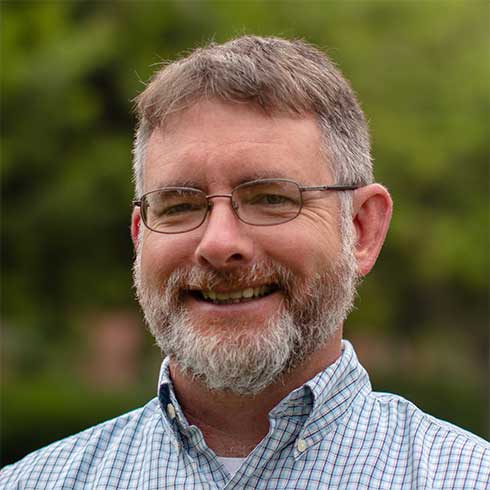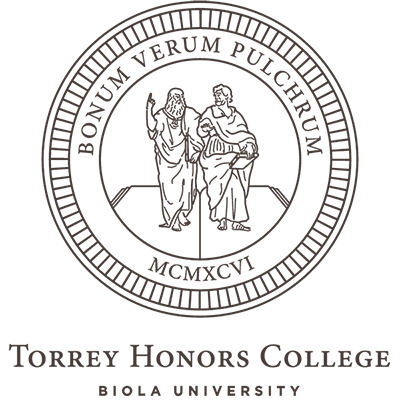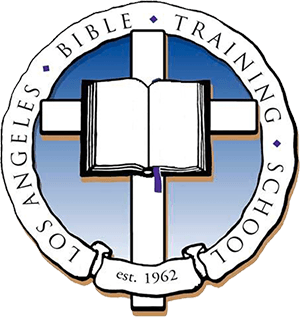A scene from The Canterbury Psalter (12th century)
Blog
“Not Disturbed, But Instructed:” Leo the Great on Appropriations

In Leo the Great’s first Pentecost sermon from the year 444 (Sermon 75), he graphically narrates the details of the advent of the Holy Spirit: wind, flame, foreign speech, and all. The imagery is all quite clear, direct, Biblical, and concrete. And then in the second sermon, he draws back for a moment, in order to clarify for his hearers that all this direct speech about wind and fire should not be misunderstood: the Holy Spirit is not the wind, not the fire, not any physical or experiential phenomenon. The Holy Spirit is God. And the easiest way to lift up Christian minds to confess this is to set the Spirit in Trinitarian context. So, apologizing to his regular audience for covering theological basics, he takes a moment to rehearse the rules by which the mind can follow Trinitarian teaching. And he is especially clear about the doctrine of appropriations. Here’s the section:
When we turn the eyes of our mind to understand the dignity of the Holy Spirit, let us picture to ourselves nothing different in the excellence of the Father and the Son, for the essence of the Divine Trinity differs in no way from its unity. It belongs eternally to the Father to be the begetter of his Son, co-eternal with himself. It belongs eternally to the Son to be the begotten of the Father, outside of time. It belongs eternally to the Holy Spirit to be the Spirit of the Father and of the Son, for the Father was never without the Son, the Father and the Son were never without the Holy Spirit. All gradations of existence are excluded, and no Person there is first, none is last. The unchangeable divinity of this Blessed Trinity is one in substance, undivided in work, united in will, the same in power, equal in glory.
It’s the basics of Trinitarianism: one numerically same essence, therefore one excellence, therefore the Holy Spirit manifests nothing different from the dignity of the Father and Son. And Leo makes a 1-3-1 sandwich here: first the essential unity, then the interpersonal distinctions (what “belongs eternally to” each of them in relation to each other), and then more unity: of substance, work, will, power, and glory.
[A pneumatological aside here: Leo identifies the Father and Son by the relation of origin (begetter/begotten), but when he comes to the Spirit, he deviates from this pattern and says that what “belongs eternally to” him is “to be the Spirit of the Father and of the Son,” adding that “the Father and the Son were never without the Holy Spirit.” This way of talking entirely avoids the filioque controversy, by entirely avoiding relation of origin language for the Spirit. That the Holy Spirit is Spirit of the Father and of the Son, and that they were never without him, is solid, fully ecumenical orthodoxy. Briefly: “of the Son” can be a genitive of possession rather than production.]
But having made the 1-3-1 sandwich, Leo draws closer to his actual concern, which is how to account for the fact that the Holy Spirit is present here under the signs of fire and wind, in such a way that it is obviously him, the Holy Spirit, rather than the Father or the Son. If Trinitarian unity is so tight, extending directly from one essence through one will to one outward work, then in what sense are we looking at and experiencing the Holy Spirit in particular?
When Holy Scripture speaks of it thus and gives in deeds or in words anything that seems to belong to separate Persons, Catholic Faith is not disturbed but instructed. Through the proper signification of either the word or the action, the truth of the Trinity is brought home to us, and the mind does not divide what the hearing establishes.
No fear, he says: If you recall your basic Trinitarianism, your faith will not be disturbed by an account o f the Holy Spirit being specially present as if by himself. You know this is not a lone agent, mavericking Pentecost without the Father or Son. Instead, Scripture is employing “proper signification of either the word or the action.” That is, the wind and fire signify the Holy Spirit, successfully directing our minds to the third person of the Trinity. We might distinguish between signification and being here: it’s not that the wind simply is the Spirit, but that the wind means the Spirit. By acting this way, the Spirit directs our minds to himself, even though the fiery and windy phenomena are the undivided work of the whole Trinity. We are instructed. I think Leo says we are “not disturbed but instructed” because he is pedagogically alert to the possibility that his listeners might be feeling alarmed if it has just now occurred to them to make a distinction between the rushing wind and the Holy Spirit. He tells us that he is especially concerned for new believers who have not yet learned to fit their thoughts to the catechetical guidelines. It’s easy to imagine them thinking, “Wait, I thought Acts 2 was about the Holy Spirit himself, but now you’re telling me it was, like, the whole Trinity at Pentecost? But then what’s the difference between them? Was this all a stage show?” Hence Leo’s sermonic style: patient rehearsal of the basics of Trinitarian interpretation: one essence, one will, one inseparable action, persons distinguished only by eternal relations to each other, appropriations that make instructive use of certain works and words to point us back to a distinct person in the Trinity. He knows that Christians have to hear this framework reiterated several times before it registers for them as the divine pattern of instruction. Don’t be disturbed; be instructed. After all, teaching by Trinitarian appropriation is not some kind of fourth-century pro-Nicene invention; it’s how the Bible teaches. And for good reason:
Certain things come to us under the name of the Father or the Son or the Holy Spirit, so that the acknowledgment of the faithful in the Trinity might not err. Although it is inseparable, it will never be known to be a Trinity if it is always mentioned without differentiation. This difficulty in expressing clearly by speech draws our hearts to the power of discerning, and, through our weakness, the heavenly doctrine helps us, that, because in the divinity of Father, Son, and Holy Spirit, neither singularity nor diversity is to be considered. The true unity and true Trinity can be apprehended “at the same time” by the mind, but cannot be produced at the same time by the lips.
God consistently and pervasively teaches by appropriations because without them, only divine unity could be taught, to the necessary exclusion of divine Trinity. And so God leads our minds to apprehend more than we can speak. Or we could say it this way: to speak the truth of the Trinity and its works, you have to break the message up into a number of different parts, which then have to be rightly related by being recomposed according to the right rules, all the while recognizing that the breaking up and recombining are events in your words and thoughts, but not in God. “It will never be known to be a Trinity if it is always mentioned without differentiation.” Therefore God himself teaches by appropriation, and so does the preacher.
____________________________
Read the Pentecost sermons in St. Leo the Great, Sermons, trans Jane Patricia Freeland, C.S.J.B. and Agnes Josephine Conway,S.S.J. (Catholic University of America Press, 1996). The long quote is from Sermon 76, pages 335-336.
About This Blog

Fred Sanders is a theologian who tried to specialize in the doctrine of the Trinity, but found that everything in Christian life and thought is connected to the triune God.


